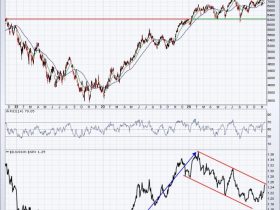The third quarter of 2024 brought significant developments and challenges to the cleantech market. These advancements reflected the industry’s ongoing commitment to sustainable practices and innovation. Let’s delve into the key highlights and trends that shaped the cleantech market in Q3 2024.
1. **Increasing Investment in Renewable Energy Projects**: One of the most notable trends in Q3 was the continued surge in investments in renewable energy projects. Companies and governments worldwide showcased their commitment to decarbonization by funding solar, wind, and hydroelectric projects at an unprecedented pace. This investment influx underscores the growing recognition of renewable energy as a crucial pillar in combating climate change.
2. **Rapid Technological Advancements**: The third quarter saw significant technological advancements in the cleantech sector. Breakthroughs in energy storage, smart grid systems, and electric vehicle technology propelled the industry towards greater efficiency and sustainability. These advancements not only enhance the performance of existing cleantech solutions but also pave the way for new opportunities and applications.
3. **Expansion of Circular Economy Initiatives**: Q3 witnessed a notable expansion of circular economy initiatives within the cleantech market. Companies increasingly embraced circularity principles by focusing on product longevity, material reuse, and waste reduction. This shift towards a circular economy model reflects a broader industry-wide commitment to minimizing environmental impact and maximizing resource efficiency.
4. **Policy and Regulatory Developments**: Regulatory changes continued to play a significant role in shaping the cleantech landscape during the third quarter. Governments worldwide implemented new policies aimed at accelerating the transition to clean energy and achieving carbon neutrality targets. These policy developments provided a clear roadmap for industry players and underscored the importance of regulatory support in driving sustainable innovation.
5. **Growing Focus on ESG Integration**: Environmental, Social, and Governance (ESG) considerations gained further prominence in Q3, with an increasing number of companies incorporating ESG criteria into their strategic decision-making processes. Investors and stakeholders placed greater emphasis on sustainability metrics, transparency, and ethical practices, signaling a broader industry shift towards more responsible business practices.
6. **Challenges and Opportunities in the Supply Chain**: The cleantech industry faced persistent challenges in supply chain disruptions during Q3. The impact of global supply chain constraints, material shortages, and logistical bottlenecks posed obstacles to industry growth and implementation. However, these challenges also presented opportunities for companies to strengthen supply chain resilience, explore local sourcing options, and drive innovation in sustainable procurement practices.
7. **Emerging Markets and Global Collaboration**: The third quarter witnessed a growing focus on emerging markets as key drivers of cleantech growth and innovation. Collaborative initiatives and partnerships between developed and developing economies aimed to leverage expertise, resources, and technology transfer to accelerate sustainable development globally. These collaborations underscored the importance of international cooperation in advancing cleantech solutions and achieving shared environmental goals.
In conclusion, the cleantech market in Q3 2024 exhibited remarkable resilience, innovation, and commitment to sustainability amidst evolving economic, technological, and regulatory landscapes. The trends and developments observed during this period set the stage for continued growth and transformation within the cleantech industry, reinforcing its pivotal role in driving the transition towards a more sustainable future.













